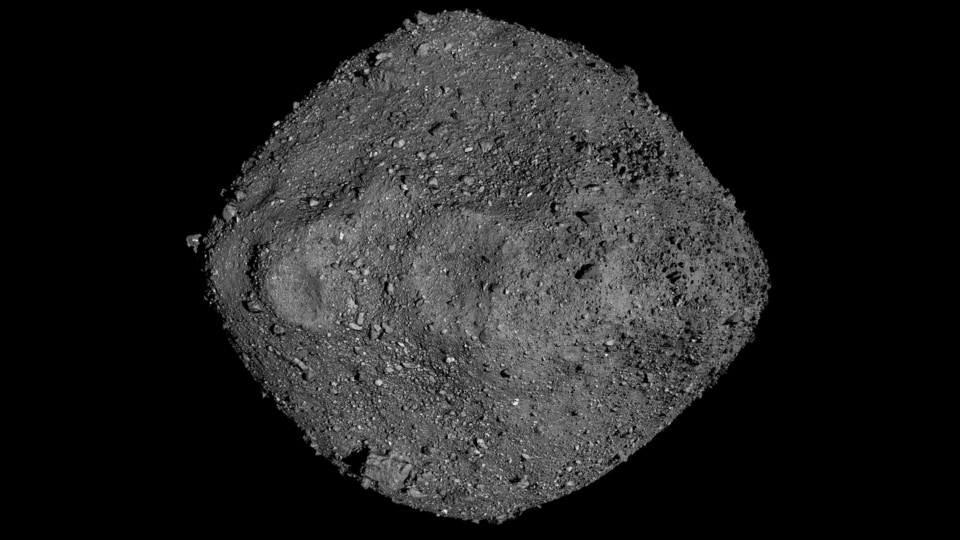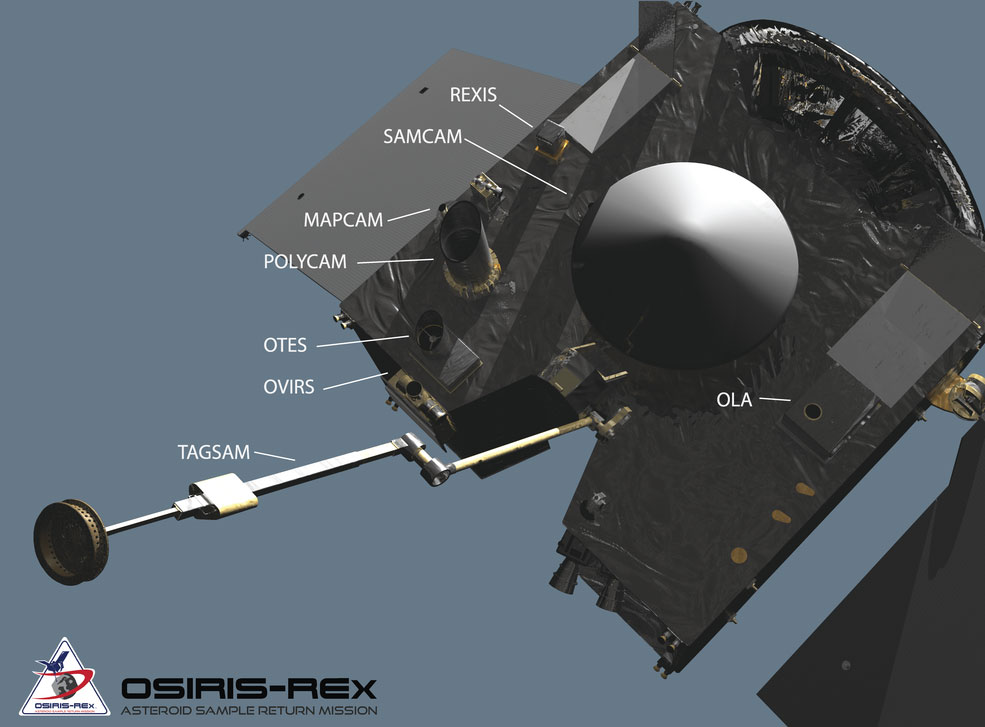
101955-Bennu, the ‘armored’ asteroid. Image courtesy of: NASA
NASA’s Origins, Spectral Interpretation, Resource Identification, Security-Regolith Explorer (OSIRIS-REx) spacecraft has completed its process of collecting a nearly 1kg sample from the armored asteroid, 101955 Bennu, also simply known as Bennu.

Image courtesy of: NASA/University of Arizona
First discovered in 1999 by the Lincoln Near-Earth Asteroid Research (LINEAR) project, the asteroid has baffled scientists with its unique form and lack of standard impact craters which are often used to determine the age of these objects.
In 2016, the OSIRIS-REx spacecraft was launched on a path to intercept and land on Bennu nearby Earth to conduct a research and gather samples which may hint at the origin of this asteroid. The mission will hopefully help scientists determine more about how planets formed, how life began, and provide more data to improve research models of asteroids that could impact Earth.
Using initial data and imaging from the OSIRIS-REx Camera Suite and surface-height topographical data derived from the OSIRIS-REx Laser Altimeter, a laser-ranging instrument on the spacecraft, scientists have determined that Bennu is a “rubble-pile” asteroid. It was likely formed from the debris of a much larger asteroid which was shattered by an ancient impact event. Fragments from the collision coalesced under their own weak gravity to form together into a mass which is now the asteroid Bennu.
This discovery allows us to better understand the unique form of “armor” that is seemingly present on the asteroid, making impacts from meteors and other space debris seem to have a much lighter effect on the asteroid, leaving smaller craters than normal and even sometimes not even leaving craters at all. Due to the loose gravity which holds the many pieces together coupled with the massive hardened boulders formed from the shattered original large asteroid, this acts as an absorption pad of sorts.
The energy of impact from space objects is absorbed by the gravity force as well as the huge boulders in the crust, keeping craters from having a full effect or tearing the asteroid apart. As such, this makes for some really cool armor which has long protected the asteroid from serious harm.
The OSIRIS-REx spacecraft now has a 1kg sample of this crust as well as another 400g sample which will begin the long trek home for scientists to eventually study in person. The craft is set to land back on Earth on 2023 where we can start to learn more about ancient asteroids and the role they play in forming planets.
We could all use some asteroid armor in our lives.